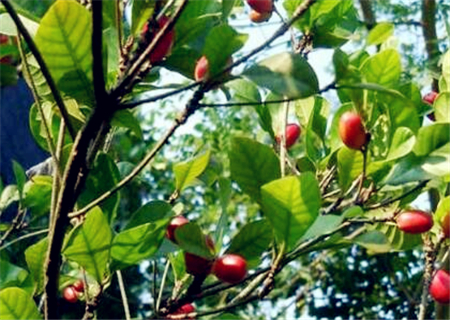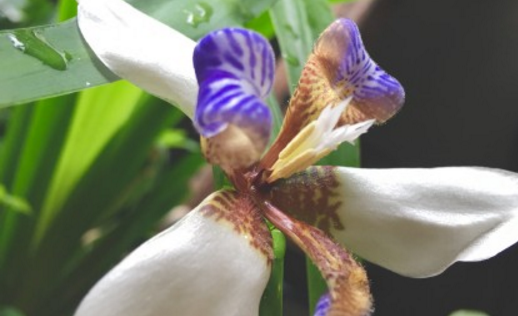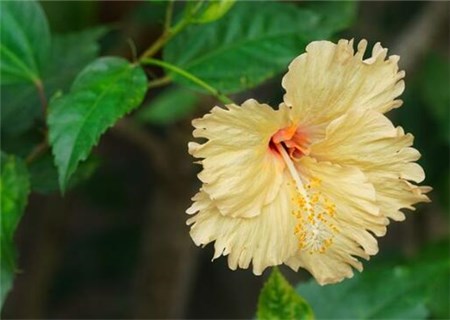How to grow the mysterious fruit of the precious plant of "national treasure"? How many years has it been planted? What is the main producing area in China?
Mystery fruit is a typical tropical evergreen shrub, which originated in West Africa, Ghana and Congo. It has been cultivated in China since 1960s, mainly in Guangdong, Guangxi, Yunnan, Hainan and other places. So how do you grow the mystery fruit? How many years will it be planted?

How many years has the mystery fruit been planted?
The mysterious fruit grows slowly and generally blossoms and bears fruit only 3-4 years after planting. Asexual reproduction can bear fruit 1 ~ 2 years ahead of time, and the tree type can be dwarfed to improve the ornamental value. The flesh is sour and astringent, rich in special glycoprotein, vitamin C, KI, citric acid, succinic acid, oxalic acid, etc., which can make sour bread sweet and delicious, make sour palm wine and beer sweet, chew a few mysterious fruits after eating sour, spicy, bitter and salty food, and immediately turn into a sweet taste.
When will the mystery fruit ripen?
The ripening period of mystery fruit is different, the full fruit period is usually March, June and October, the fruit is small oval, the fruit is bright red when mature, the pulp is white and succulent, and ants and other insects impart pollen. The mysterious fruit was introduced in China in the 1960s, and now it has been cultivated as a garden ornamental plant in many areas. it opens small white flowers in September, bears fruit in October, and ripens from green to red in November.
Cultivation techniques of mysterious fruit
Garden site selection
The mysterious fruit is native to the tropics and is fond of slightly acidic or neutral soil with high organic matter content and good soil moisture conservation ability, which is suitable for cultivation in tropical and subtropical low-altitude areas. The average temperature of the garden is 25 ℃, the average temperature in January is more than 8 ℃, and the lowest temperature is not less than 5 ℃. Choose the leeward gentle slope of south, southeast or southwest to build the garden, and it is better to use the garden with sufficient water and convenient transportation.
Breeding technology
Sowing: mysterious fruit seeds are not suitable for long storage, but should be sowed as they are picked. Pick the ripe fruit and leave it for 2 to 3 days until the peel and pulp change color, wash the peel and pulp and dry. Hole sowing, on-demand sowing, sowing or strip sowing on the seedling bed can cover the culture soil with loose matrix 2cm to keep the soil moist. The seedlings can emerge in about 30 days, and the emergence rate is more than 85%. 25 days after emergence, 0.1% urea and 0.1% potassium dihydrogen phosphate mixed fertilizer can be sprayed. When the seedlings have 3 or 4 true leaves, they can be transplanted.
Cutting: the mysterious fruit should be cut from March to April, and it can also be cut in September, but the survival rate is relatively low. When cutting, mature, disease-free and robust branches should be selected as materials. The cutting branches should be cut into about 15cm, with 1-2 leaves or young leaves, and the base should be cut into a slope of 30 °~ 45 °. The branches were sterilized with 500 × 600 times of carbendazim suspension and treated with 800mg/L naphthalene acetic acid for about 10 s. Insert the whole branch 1 / 2 / 2 / 3 in the sterilized sand bed, keep the relative humidity above 80% and 75% of the shade condition [6], and check the growth of the seedlings every 5 days.
Air striping: the sturdy shoots of 2 ~ 3 years old and above 0.5cm in diameter were selected and treated in the season of high temperature and humidity from April to May, and they could take root in 60 ~ 70 days. According to the experiment, the rooting effect stimulated by 500mg/LIBA or 500mg/LABT2 rooting powder is good, and the rooting rate can reach 80%. The high pressure part was girdled about 2 hours before pressing, the width was 2 to 3 times the diameter of the branch, the depth was up to xylem, and the cambium was scraped off. Mix the IBA or ABT2 liquid into a paste with a small amount of yellow soil, then apply it to the top of the ring peeling site and the upper cut, and wrap it with the cultivation substrate (mushroom residue ∶ humus soil is 2 ∶ 3). The humidity of the substrate is not dispersed by hand, and it is suitable for hand sewing with slight moisture, the matrix is squeezed into fist size and wrapped in the girdling area with plastic film. Check the moisture condition every 15 days and see that clear water can be injected with a syringe when it dries.
Colonization
The planting was carried out from March to April or from September to October, with a row spacing of 1.5m × 2.0m and a planting hole of 0.4m × 0.4m × 0.4m. Apply base fertilizer to the planting hole according to the soil condition, generally use 45% compound fertilizer and 250g organic fertilizer to mix with the surface soil, spread about 20cm at the bottom of the planting hole, and cover a layer of topsoil about 10cm. When planting, pile the planting pier with a diameter of 0.6m and a height of 25cm at the base of the tree, pour enough water and step on it with your feet. Keep the soil moist for 10 days after planting, and then decide whether to replenish water according to humidity.
Fertilizer and water management
Fertilizer management: mystery fruit can shoot, blossom and bear fruit many times a year, so there is a great demand for fertilizer. The scientific application of compound fertilizer in the seedling stage should be based on the principle of frequent application of thin fertilizer and spraying foliar fertilizer to promote the vegetative growth of fruit seedlings. Adult fruit trees should be mixed with organic fertilizer and compound fertilizer. Nitrogen fertilizer was reasonably applied in early spring to promote shoot growth, and 0.2% borax was sprayed to promote fruit when the bud was not in bud. When applying Baoguo Zhuangguo fertilizer, a compound fertilizer with a content of 45% Mel 48%, combined with trace elements (Sima red, etc.) and 0.2% potassium dihydrogen phosphate should be sprayed. In late winter and early spring, base fertilizer was applied to restore tree potential, promote growth, and re-apply farm fertilizer and phosphorus and potassium fertilizer.
Water management: mysterious fruits have certain requirements for moisture and humidity, not only to maintain soil moisture after planting, but also to spray water on branches and leaves to keep them moist. In order to prevent water evaporation in summer, the tree base needs to be covered with withered grass or covered with a sunshade net to preserve soil moisture. Especially in the period of blooming and fruiting and the dry season of autumn and winter, it is necessary to strengthen the management of water.
Shaping and pruning
Prune the mysterious fruit when it grows slowly, not with heavy pruning. Young trees are mainly to promote growth and stereotyping, and should be pruned with natural happy shape or natural round head. Combined with wiping buds to fix shoots and coring, to promote the rational distribution of branches, 2-3 buds in different directions were selected as lateral branch culture. Remove the dense branches of the inner chamber and cut off the long branches to facilitate the short tip of the outer branches of the main branch. After fruit harvest in winter, cut off disease and insect branches, overgrown branches, drooping branches, over-dense branches, overlapping branches, etc., and leave 1-2 branches with strong branching power to replace the peripheral branches of the main branch as the fruit branch of rotation.
Flower and fruit management
Flower and fruit protection: 0.2% borax and 0.1% potassium dihydrogen phosphate are sprayed 1-2 times in the bud stage, 0.5% borax is sprayed once in the flowering stage, combined with artificial pollination, fruit setting can be greatly promoted. Spraying vegetarian foliar fertilizer before fruit drop after flowering can promote fruit expansion and fruit protection, which can be combined with pest control.
Flower thinning and fruit thinning: the secret fruit has a large number of flowers in the main flowering period, so it should be carried out in time to reduce the consumption of nutrients and promote fruit growth. In the young fruit stage, diseased and abnormal fruits should also be removed, and proper topdressing should be carried out to improve fruit quality.
Fruit harvest: as mysterious fruits are produced in different periods, they should be harvested in time so as not to affect the growth of the next batch of fruits. When the fruit is 9 minutes ripe, it should be harvested, together with the stalk, which can prolong the storage time of the fruit.
Pot planting method of mysterious Fruit
Sowing and reproduction: take full seeds, sprout with gauze to keep the gauze moist, wait for the seed opening to show white when sowing, the depth is about 2 cm, wait until 3-4 leaves can be moved, during the growth period need to strengthen the management of water and fertilizer, the result is slow, generally blossom and bear fruit in three or four years.
Cutting propagation: the way of cutting propagation is relatively simple, take about 10 cm of branches on the line, about 30 days can take root, after the normal management on it.
Management method: mysterious fruit is suitable for acidic soil, which can be mixed with garden soil, sawdust and cake fertilizer; the temperature suitable for growth is about 22 °- 32 °. Pay attention to the temperature not too low, which affects plant growth, resulting in withered leaves; keep the soil moist in summer and growing season, and water it in time when it is found to be dry, once every 7 days in autumn and winter.
Time: 2019-03-16 Click:
- Prev

Is Brazilian Iris poisonous? Breeding methods and precautions? What does it do?
Brazilian iris is easy to plant and has a strong tolerance for the environment. Is Brazilian iris poisonous? Breeding methods and precautions? What does it do? According to information, Brazil iris is indeed toxic, but its toxicity is mild, is a slightly toxic plant
- Next

What are the planting methods of hibiscus flowers in hibiscus? What is the effect and effect? What does it symbolize?
Hibiscus flowers are suitable for planting in courtyards, slopes, roadsides, forest edges and in front of buildings, or as flower hedges, and can also be potted in the cold north. So do you know the planting methods of hibiscus flowers? What is the effect and effect? What does it symbolize? Hibiscus flower planting method, 1. Soil: hibiscus hibiscus is not strict with soil.
Related
- Fuxing push coffee new agricultural production and marketing class: lack of small-scale processing plants
- Jujube rice field leisure farm deep ploughing Yilan for five years to create a space for organic food and play
- Nongyu Farm-A trial of organic papaya for brave women with advanced technology
- Four points for attention in the prevention and control of diseases and insect pests of edible fungi
- How to add nutrient solution to Edible Fungi
- Is there any good way to control edible fungus mites?
- Open Inoculation Technology of Edible Fungi
- Is there any clever way to use fertilizer for edible fungus in winter?
- What agents are used to kill the pathogens of edible fungi in the mushroom shed?
- Rapid drying of Edible Fungi

